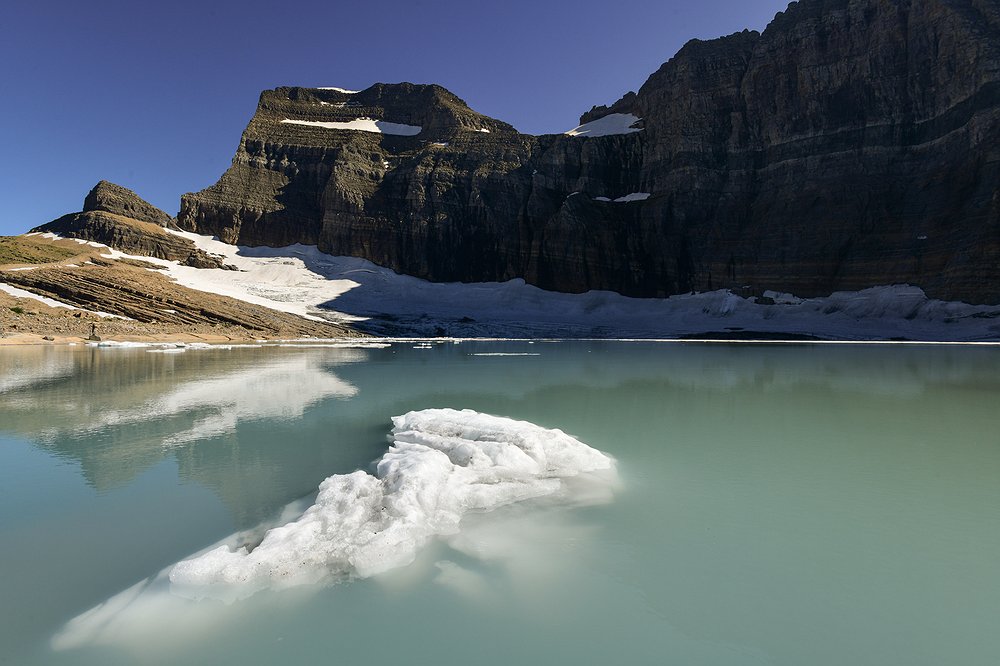Glacier National Park sets goal to be net zero by 2050
Glacier National Park is working to map out a plan to reduce its carbon footprint and explore other energy efficiency initiatives as part of a new Climate Action Strategy project that targets a goal of zero emissions by 2050.
Citizen Science Program Manager and biologist Jami Belt described Glacier Park as a poster child for climate change. When visitors listen to a ranger or read the park newspaper, there’s a good chance they will be learning about how a warming climate has affected Glacier.
"People come here looking for us to be leading an example, and we need to have a lot more visible ways that to show what we're doing to mitigate our climate footprint, both operationally as well as what we can do to mitigate the visitor impacts from climate change,” Belt said about the project.
A 2021 executive order from President Joe Biden outlined clean energy targets for federal agencies like the National Park Service.
In light of the order, Glacier officials decided to take note of the parks’ greenhouse gas inventory in 2022.
The report concluded that emissions from visitor vehicles dwarf the footprint of park and vendor operations, as data from the 2021 season showed there were more than 18,000 cubic tons of greenhouse gas emissions released from cars. That accounted for 83% of all greenhouse gas emissions parkwide that year.
However, the goal of the inventory study and the future Climate Action Strategy plan is to look at what the Park Service can control in its operations.
Park operations put out nearly 3,000 cubic tons of greenhouse gas emissions in 2021— of which paid electricity accounted for 31%, mobile vehicles accounted for 25% and idling vehicles accounted for 16%. Park employees commuting to work make up 21% of greenhouse gas emissions, while waste and wastewater treatment accounted for 5% and 1%, respectively.
Despite park operations taking up a small piece of the pie, the report said its carbon footprint is still equal to the energy use of 356 households.
“That (report) has been a really great tool for us to understand how to prioritize and where to put our energy. You know, where we get the biggest reductions, as far as bang for our buck, low hanging fruit and things like that, and starting to look at how to implement some of those,” Belt said.
It’s not the first time there have been projects to tackle the issue.
The Glacier National Park Conservancy previously funded solar panels and more efficient wastewater systems in many park buildings.
“Before this, Glacier has done a lot of great work to mitigate greenhouse gases with some of our renewable energy projects. We do a lot of work retrofitting buildings with better lighting, better insulation and things like that, where applicable,” Belt said.
The Conservancy is also funding the Climate Action Strategy project, which has a goal set at $107,254 to cover the cost of hiring a climate action coordinator for one year out of a four-year term. Their goal will be to achieve mandated emission reductions by 2030 and net zero by 2050, according to the Conservancy.
Belt said this person will identify what short-term projects are feasible and what long-term projects could be addressed through additional fundraising or grants. She said they will strategize how to bring in local partnerships with stakeholders and tribes to accomplish their goals.
Conservancy Executive Director Doug Mitchell said they’ve been pleased to help fund individual projects like solar power and other green team recycling efforts, but funding a comprehensive plan is how they can really move the needle.
“I think getting our arms around that by helping the park hire a person to do that work and create that strategy, is really how we're going to be able to be more efficient going forward,” Mitchell said.
The coordinator would also work on garnering support for the Green Team, a group of volunteer park service employees in Glacier who are passionate about tackling sustainability initiatives.
“We currently have members from pretty much every division within the park, so it would be getting them on board to start trying to figuring out, what are the things that we can launch right now?” Belt said. “... And then following that, what are some of the bigger initiatives that need longer term funding, longer term strategizing, and how do we start to tackle some of those funding needs?”
In addition to information from the greenhouse gas inventory report, she said a report on climate hazards that looks at impacts on human health and resource damage will be incorporated into the strategy.
"The clock is ticking. We have such a short amount of time to make an impact, and we want that impact to be visible. So we'll also have a lot of educational components to this,” Belt said.
She said that may look like creating climate communication videos or having the Headwaters podcast focus on episodes that will raise awareness around what park officials are doing to lower emissions.
“That would hopefully show a way forward and create a shining light for people to see that even a large entity like this can make the transition without suffering, without making huge sacrifices,” Belt said.
Visit glacier.org and click on “our work” to view the Conservancy’s upcoming projects for 2025, which includes the Climate Action Strategy.
This story has been updated to correct the employment term for the climate action coordinator.
Reporter Taylor Inman can be reached at 406-758-4433 or by emailing tinman@dailyinterlake.com.



